- Anti Viral
- Bimatoprost
- Antibiotics
- Women's Health
- Cetaphil
- Botulinum
- Diabetes
- Human Albumin
- Anti Malarial
- Dermal fillers
- Chemical Peels
- Nephrology Segment
- Kidney / Liver Care
- Anti Cancer
- Altus Product's
- Pharmaceutical Products
- Anti Fungal
- Hepatitis
- Beauty & Skin Care
- Asthma
- Modafinil
- Urology Segment
- Thyroid Care
- Armodafinil
- HIV Medicines
- Weight Loss
- Naltrexone
- Anti Emetic
- Neuropathic Pain
- Mens Health
- Hair Loss
- Pain Relief
- HCG Injections
- Quit Smoking
- Pharmaceutical Vaccine
- Best Selling Products
- Anti-Cancer
- Armodafinil
- Bimatoprost
- Botulinum
- Dermal Fillers
- Hepatitis
- Mens-health
- Modafinil
- Naltrexone
- ANTI EMETIC
- Altus Product’s
- Anti Fungal
- Anti Malarial
- Anti Viral
- Antibiotics
- Asthma
- Beauty & Skin Care
- Cetaphil
- Chemical Peels
- Diabetes
- Hair Loss
- HCG Injections
- HIV Medicines
- Human Albumin
- Kidney / Liver Care
- Neuropathic Pain
- Pain Relief
- Pharmaceutical Products
- Pharmaceutical Vaccine
- Quit Smoking
- Thyroid Care
- Weight Loss
- Women’s Health
- Anti Viral
- Bimatoprost
- Antibiotics
- Women's Health
- Cetaphil
- Botulinum
- Diabetes
- Human Albumin
- Anti Malarial
- Dermal fillers
- Chemical Peels
- Nephrology Segment
- Kidney / Liver Care
- Anti Cancer
- Altus Product's
- Pharmaceutical Products
- Anti Fungal
- Hepatitis
- Beauty & Skin Care
- Asthma
- Modafinil
- Urology Segment
- Thyroid Care
- Armodafinil
- HIV Medicines
- Weight Loss
- Naltrexone
- Anti Emetic
- Neuropathic Pain
- Mens Health
- Hair Loss
- Pain Relief
- HCG Injections
- Quit Smoking
- Pharmaceutical Vaccine
- Best Selling Products
No products in the cart.
Return To Shop$42.86 – $119.48Price range: $42.86 through $119.48
Lupisulin M 30 Solution for Injection (Insulin Isophane/NPH 70% / Human Insulin/Soluble Insulin 30%)
Lupisulin M 30 Solution for Injection 40IU/ml is a combination of two medicines, an intermediate-acting and a short-acting type of insulin. It is used in the treatment of diabetes mellitus (type 1 and 2) to improve blood sugar control both in adults and children. It helps maintain the blood sugar levels in diabetic patients.
Have questions?
Call : +91 9002 1002 33
Lupisulin M 30 Solution for Injection (Insulin Isophane/NPH 70% / Human Insulin/Soluble Insulin 30%)
| COUNTRY OF ORIGIN | India |
|---|---|
| DOSAGE FORM | Injection |
| GENERIC NAME | Insulin Isophane/NPH |
| INDICATION | Diabetes mellitus (Type 1 & Type 2) |
| PACKAGING | 10 ml in 1 vial |
| MANUFACTURER | Lupin Ltd |
| COMPOSITION | Insulin Isophane/NPH (70%) + Human Insulin/Soluble Insulin (30%) |
PRODUCT INTRODUCTION
Lupisulin M 30 Solution for Injection 40IU/ml is a combination of two medicines, an intermediate-acting and a short-acting type of insulin. It is used in the treatment of diabetes mellitus (type 1 and 2) to improve blood sugar control both in adults and children. It helps maintain the blood sugar levels in diabetic patients.
Lupisulin M 30 Solution for Injection 40IU/ml is normally prescribed along with other diabetes medicines. Your doctor or nurse will teach you the correct way of injecting it under the skin. It should be taken 15 minutes before a meal or within 20 minutes after starting a meal. Don’t stop taking it unless your doctor tells you to.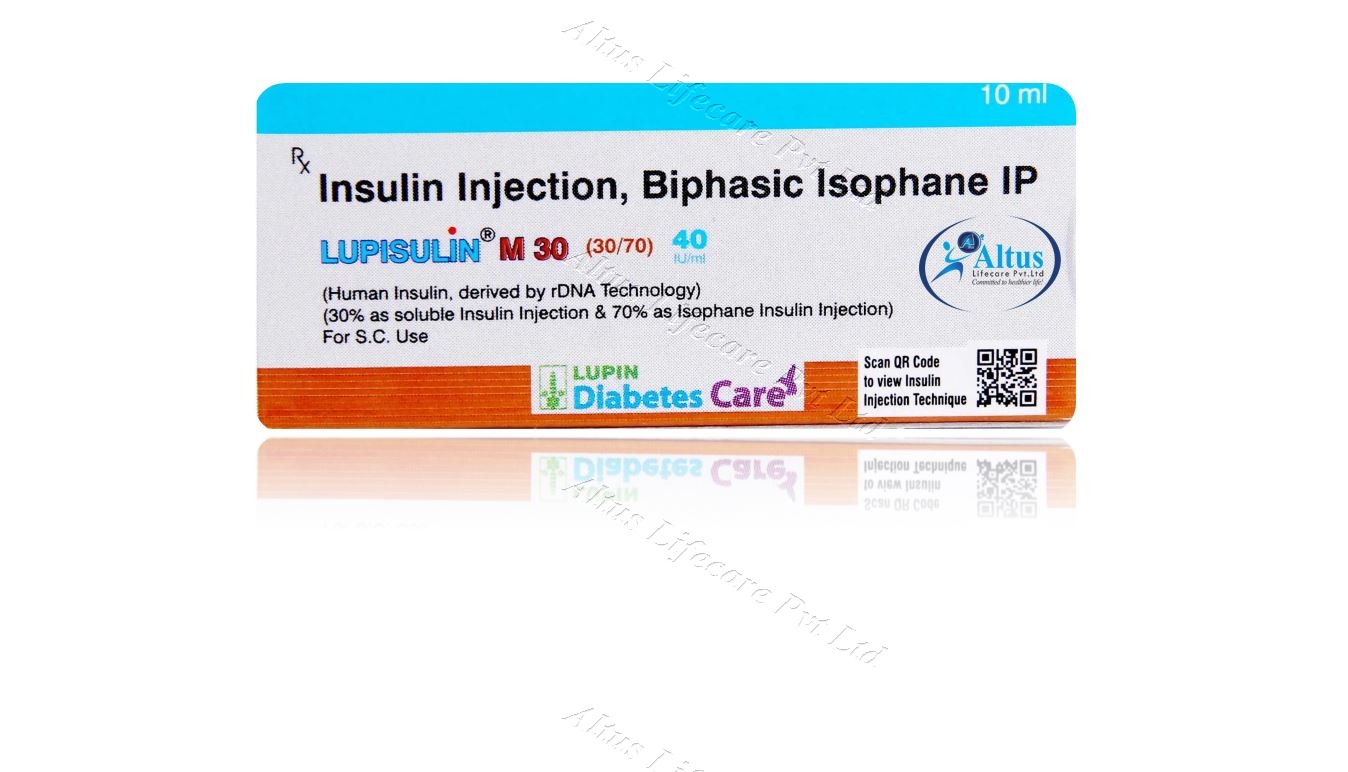
It is only part of a treatment program that should also include a healthy diet, regular exercise, and weight reduction as advised by your doctor.
Check your blood sugar levels regularly, keep track of your results and share them with your doctor. This is very important to work out the correct dose of the medicine for you.
The most common side effect of this medicine is low blood sugar levels (hypoglycemia). To prevent this, it’s important to always inject the correct dose of medicine only, have regular meals, and monitor your blood sugar levels regularly. Drinking excessive alcohol can also lead to a fall in your blood sugar levels.
Other side effects include reactions at the injection site like redness or swelling. Some people gain weight while taking insulin. You may also notice a rash, edema (swelling), or itching while taking this medicine.
Do not use this medicine when you have low blood glucose levels (hypoglycemia). Tell your doctor if you’ve ever had kidney, liver or heart problems before starting treatment. Pregnant or breastfeeding women should also consult their doctor as the dose may need to be changed.
“Balancing Act: Navigating Diabetes with Insulin Isophane/NPH 70% + Human Insulin/Soluble Insulin 30%”
In the intricate world of diabetes management, the combination of Insulin Isophane/NPH (70%) and Human Insulin/Soluble Insulin (30%) emerges as a carefully orchestrated balancing act. This unique formulation combines the delayed-release characteristics of NPH insulin with the rapid onset and short duration of soluble insulin, creating a dynamic synergy.
The 70/30 ratio signifies a thoughtful blend that addresses both immediate postprandial insulin needs and the sustained basal support required throughout the day. This blog delves into the intricacies of this balanced insulin formulation, exploring its mechanisms of action, versatility in dosing, and the pivotal role it plays in achieving optimal glycemic control for individuals navigating the challenges of diabetes. Understanding the delicate balance of Insulin Isophane/NPH 70% + Human Insulin/Soluble Insulin 30% is crucial for those seeking a comprehensive and tailored approach to their diabetes care.
“Harmony in Diversity: Exploring the Dynamics of Insulin Isophane/NPH 70% + Human Insulin/Soluble Insulin 30%”
In the diverse landscape of insulin therapy, the combination of Insulin Isophane/NPH (70%) and Human Insulin/Soluble Insulin (30%) exemplifies harmony in diversity. This insulin blend integrates the characteristics of intermediate-acting NPH insulin with the immediate impact of soluble insulin, catering to the multifaceted insulin needs of individuals with diabetes. The 70/30 ratio offers a versatile solution for those requiring both rapid postprandial control and sustained insulin coverage.
This blog explores the dynamics of Insulin Isophane/NPH 70% + Human Insulin/Soluble Insulin 30%, shedding light on how this harmonious blend addresses the unique challenges presented by diabetes. From its composition to its applications, this discussion emphasizes the adaptability and effectiveness of this insulin combination, showcasing its ability to harmonize the diverse aspects of diabetes management.
DM Type 2 Medications: Medication Mastery for Better Health Outcomes
Achieve mastery in medication management with a focus on achieving better health outcomes for individuals managing Type 2 Diabetes. Explore how mastering medications contributes to overall health improvement.
“Meds for Diabetes Mellitus Type 2: Medication Mastery and Comprehensive Wellness”
Achieve medication mastery as a key element in the pursuit of comprehensive wellness for individuals managing Type 2 Diabetes. This guide explores how mastering medications aligns with a holistic approach to wellness, emphasizing the interconnectedness between medication management and overall well-being.
Diabetes Mellitus Medications: Choosing Wisely for Effective Diabetes Management
Make wise and informed choices for effective diabetes management through this guide. Explore how strategic choices in medication use contribute to effective diabetes management, promoting overall health and well-being.
Signs and Symptoms of Type 2 Diabetes Mellitus: Early Diabetes Warnings for Better Health
Explore the early warnings associated with Type 2 Diabetes Mellitus for better health. Recognize the specific signs and symptoms that act as early warnings, emphasizing their role in fostering proactive health measures.
Treatment of Type 2 Diabetes Mellitus: Evaluating the Impact of Intensive Lifestyle Interventions
Focusing on lifestyle modifications, this section explores the impact of intensive lifestyle interventions in the treatment of Type 2 Diabetes Mellitus. By evaluating the effectiveness of comprehensive lifestyle changes, the discussion aims to provide insights into holistic approaches to diabetes care.
Medications for Diabetes Mellitus Type 2: Medication Modification Strategies
– Modification strategies are relevant in diabetes care. Join us as we explore medication modification approaches, providing insights into when and how individuals with type 2 diabetes might consider modifying their medication plans for improved outcomes.
Innovate to Elevate: Drug for Diabetes Mellitus Type 2 Chronicles
Narrating stories of innovation that elevate Diabetes Mellitus Type 2 care, this exploration delves into the drug’s groundbreaking approaches and their impact on elevated health outcomes.
USES OF LUPISULIN M SOLUTION FOR INJECTION
- Diabetes
BENEFITS OF LUPISULIN M SOLUTION FOR INJECTION
In Diabetes
SIDE EFFECTS OF LUPISULIN M SOLUTION FOR INJECTION
Common side effects of Lupisulin M
- Hypoglycemia (low blood glucose level)
- Injection site reactions (pain, swelling, redness)
- Weight gain
HOW TO USE LUPISULIN M SOLUTION FOR INJECTION
HOW LUPISULIN M SOLUTION FOR INJECTION WORKS
SAFETY ADVICE

Alcohol

Pregnancy

Breast feeding

Driving

Kidney
Regular monitoring of blood glucose levels is recommended for dose adjustment.

Liver
Regular monitoring of glucose levels is recommended for dose adjustment.
WHAT IF YOU FORGET TO TAKE LUPISULIN M SOLUTION FOR INJECTION?
| Pack Size | 5 Injection/s, 10 Injection/s, 15 Injection/s, 20 Injection/s |
|---|
3 reviews for Lupisulin M 30 Solution for Injection
Related products
Pemnat Injection (Pemetrexed)
From: $149.35Decarb 500 Injection (Dacarbazine)
From: $171.43Viroclear 400mg Tablet | Sofosbuvir 400mg
From: $256.41Sofovir 400mg Tablet | Sofosbuvir 400mg
From: $102.56Sofab LP Tablet | Ledipasvir | Sofosbuvir
From: $256.41Cytosar Injection (Cytarabine)
From: $57.14Hepcvel Tablet | Sofosbuvir 400mg | Velpatasvir 100mg
From: $205.13People also bought
-

Benoquin 40 Cream | Monobenzone 40%
From: $154.77 -
 From: $38.38
From: $38.38 -
 From: $40.05
From: $40.05 -

Aziderm 10% Cream 15gm | Azelaic Acid 10%
From: $39.26
Our Services
Shipping
Shipping at Discounted Price
Money Returns
Return Within 30 Days
Secure Payment
Safe & Secure Payment
Support 24/7
Contact 24 Hours Day
From: $102.60
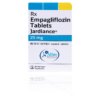
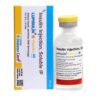
From: $42.73
- Anti-Cancer
- Armodafinil
- Bimatoprost
- Botulinum
- Dermal Fillers
- Hepatitis
- Mens-health
- Modafinil
- Naltrexone
- ANTI EMETIC
- Altus Product’s
- Anti Fungal
- Anti Malarial
- Anti Viral
- Antibiotics
- Asthma
- Beauty & Skin Care
- Cetaphil
- Chemical Peels
- Diabetes
- Hair Loss
- HCG Injections
- HIV Medicines
- Human Albumin
- Kidney / Liver Care
- Neuropathic Pain
- Pain Relief
- Pharmaceutical Products
- Pharmaceutical Vaccine
- Quit Smoking
- Thyroid Care
- Weight Loss
- Women’s Health

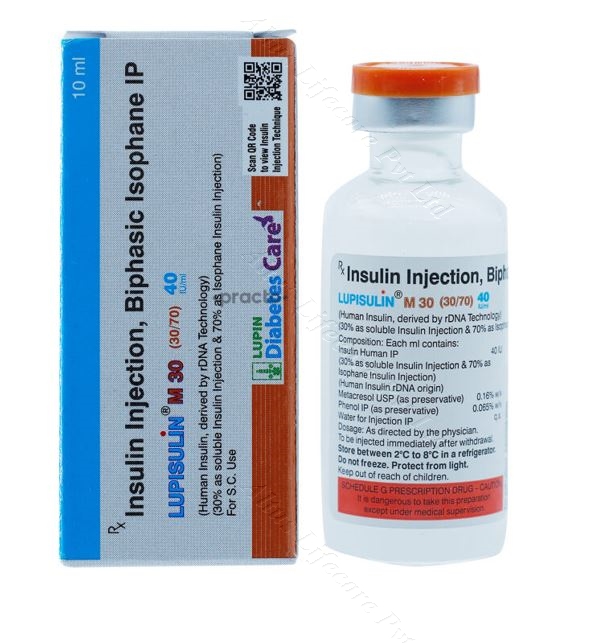
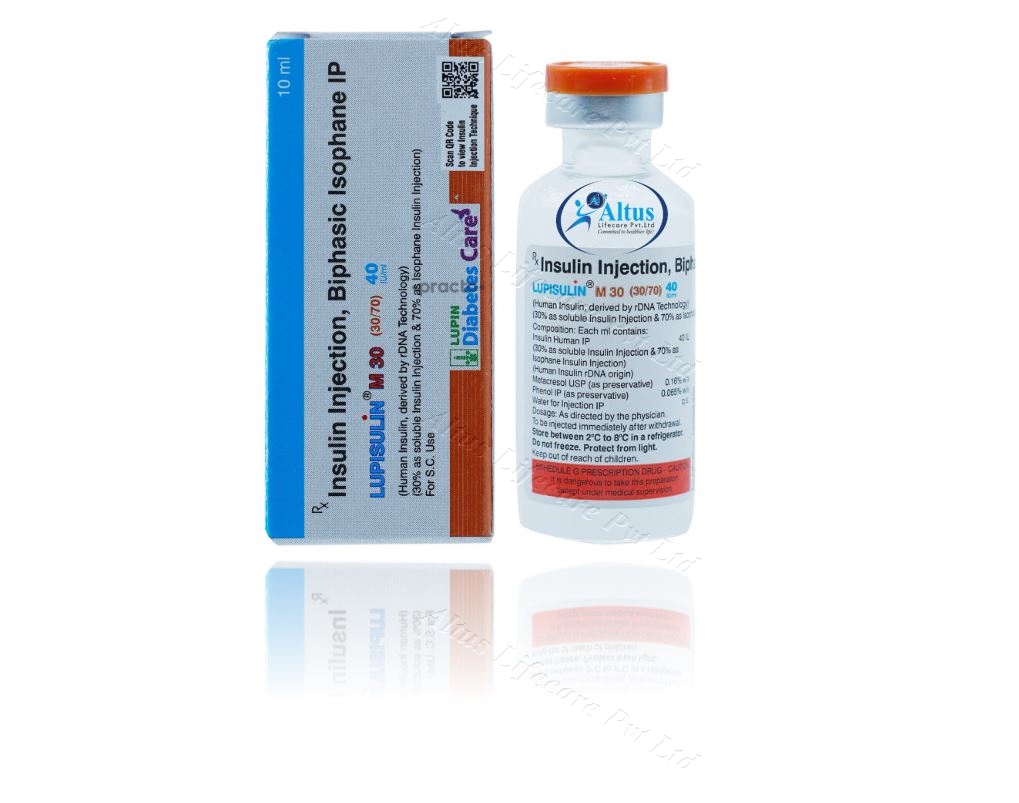
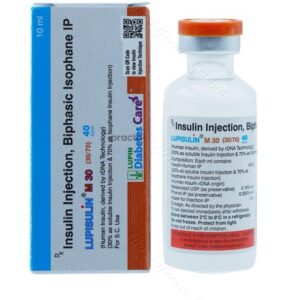

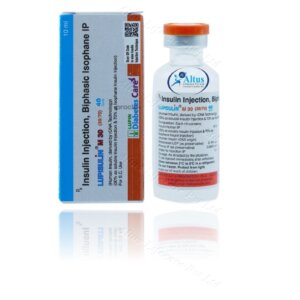
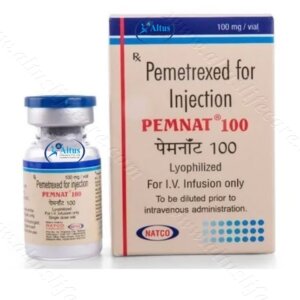
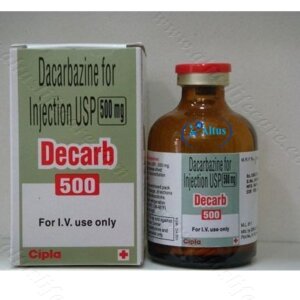
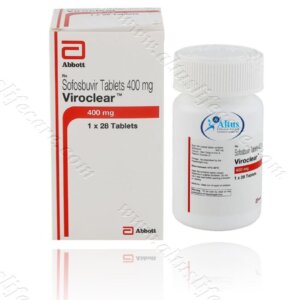
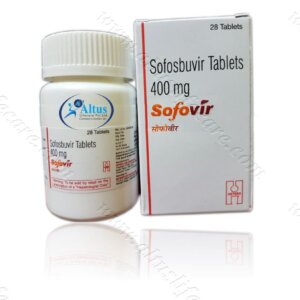
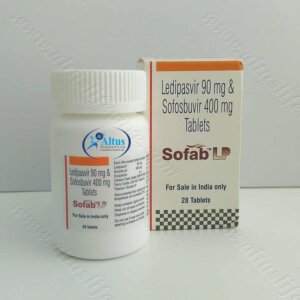
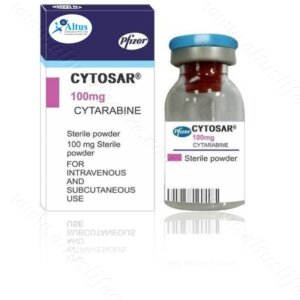
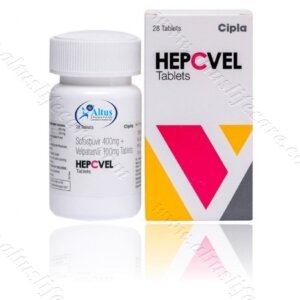


Fatima (verified owner) –
Type 2 diabetes has encouraged me to be open-minded, exploring various strategies to optimize my health.
Christina (verified owner) –
“I’m thrilled with my purchase. The product quality is outstanding, and the packaging is impeccable.”
Kara (verified owner) –
“Shipping was fast, and the product quality is outstanding – very impressed!”